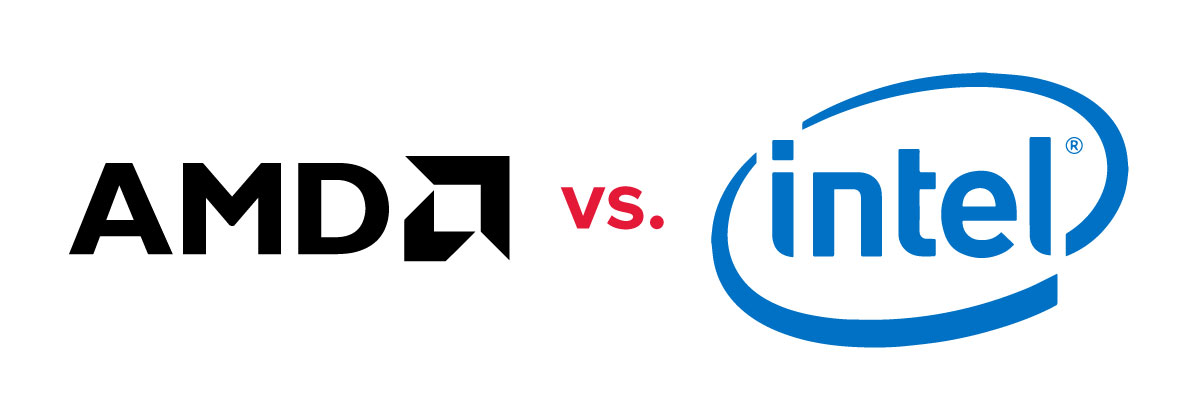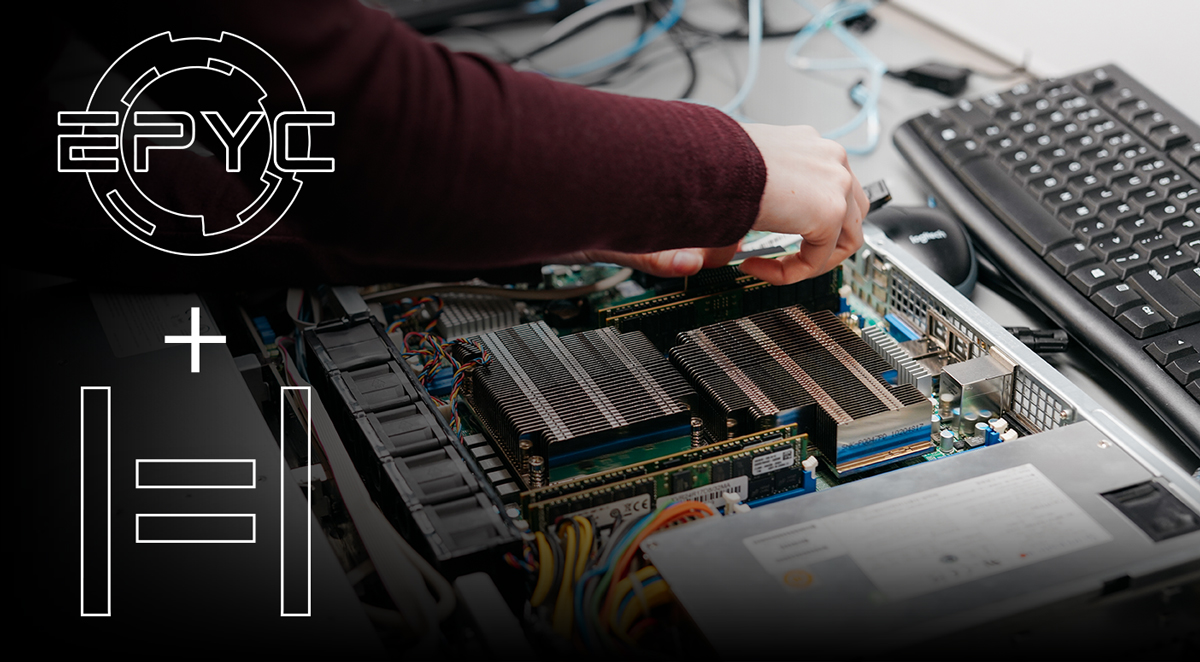
At Hivelocity, we’re not one to play favorites with hardware. While our technicians have their individual preferences, as a whole, we know the best solutions are the ones that best fit the needs of our clients. That said, there is certainly value in the comparative metric tests available through SPEC (Standard Performance Evaluation Corporation), and at times, the results of these tests are simply too overwhelming to leave much room for debate. In the case of CPUs, this has become especially true with AMD’s 3rd Generation EPYC “Milan” processors.
After placing 1st in all 16 categories of the SPECspeed2017 and SPECrate2017 tests (according to tests run and published by NextPlatform), it’s hard to deny that AMD’s EPYC chips might be the fastest, most efficient processors on the market. But what does that mean for you and your organization? What is it about AMD EPYC that makes these outstanding results possible? Should your company consider making the switch?
Read on for more about AMD EPYC and the important advantages it has to offer organizations like yours.
What is EPYC?
Designed to utilize their proprietary “Zen” microarchitecture, EPYC is a series of enterprise-grade x86-64 microprocessors designed and released by AMD. With support for more RAM, higher core counts, and increased PCI Express lanes, the EPYC line of processors offer premium alternatives to AMD’s desktop Ryzen models. Designed for large and growing organizations, these processors have been built with scalability, hyperconverged infrastructure (HCI), and cloud native app development in mind. Certified for use with multiple popular virtualization solutions including VMware and Nutanix, and fostering partnerships with major HCI providers like HPE, Dell, and Lenovo, AMD has secured itself as a fixture in data centers around the world. With their long-term focus on hyperconverged infrastructure, AMD can keep your organization on the path of continuous development, all while maximizing the lifetime value of your initial investment.
EPYC Gen 2, which released back in 2019, represented a massive technological leap for AMD, carrying the company from the point of bankruptcy and earning them a strong foothold in an industry previously dominated by Intel. Now, having launched in March of 2021, AMD’s EPYC Gen 3 Milan processors have already broken over 100 world records in categories ranging from HPC to standard enterprise workloads. Utilizing their new Zen 3 architecture, the new Milan processors not only offer higher core counts and increased PCIe 4.0 lanes, but also represent a 19% performance improvement over AMD’s previous generation of processors.
It’s hard to deny that AMD’s EPYC chips might be the fastest, most efficient processors on the market.
With AMD’s market share growing and their chips continuing to lead the charge in powerful, efficient design, the argument over Intel vs. AMD has only grown louder. With the release of both companies’ Gen 3 options though, the fight for supremacy has grown more one-sided than ever.
So what’s the verdict? Is one option really better than the other?
AMD vs. Intel

AMD and Intel have been engaged in an ongoing CPU chip arms race since the early 2000s. With the size of chips shrinking and new models releasing almost yearly, both companies have continued to outdo themselves as they struggle to be considered the industry’s best. While Intel still retains a strong hold over the market, AMD’s EPYC line of processors have succeeded in significantly weakening the tech giant’s grip. This can especially be seen in NextPlatform’s tests, in which Intel’s new Gen 3 Ice Lake processor (part of its Xeon Scalable line) falls behind not only AMD’s Gen 3 EPYC chips, but their Gen 2 chips as well. This means Intel’s newest chips, having just launched in April of 2021, are struggling to match the output results of AMD’s 2019 chips, let alone the new Gen 3 launched back in March.
Now this is in no way an attempt to defame Intel. Their Xeon Scalable servers are solid CPUs which have been fixtures in data centers everywhere for decades. But numbers don’t tend to lie, and the results of recent speed and efficiency tests have been quite noteworthy. If you’ve been considering making the switch to an AMD-based chip, now might be the right time.
To summarize some of the more interesting results from NextPlatform’s tests, I’ve listed a few statistics below:
- In 2-Socket Integer Performance (32 Cores across all 3 builds) – Xeon Gen 3 does perform better than EPYC Gen 2 by ~5.2%, but when compared to EPYC Gen 3, AMD outperforms Intel by roughly 27.6%.
- In 2-Socket Floating Point Performance (32 Cores across all 3 builds) – Not only does EPYC Gen 3 perform about 30.6% better than Xeon Gen 3, but even EPYC Gen 2 beats it by nearly 4%.
One of the most interesting results presented from the test is in NextPlatform’s assessment of the impact on EPYC vs Xeon on users’ three year TCO (Total Cost of Ownership). With potential for roughly 34% lower server costs, about 50% lower rack space investment, nearly 42% lower power usage, and an estimated 33% lower admin costs, AMD’s Gen 3 EPYC chips are not only technically impressive, but cost-saving as well.
That’s a hard combination to beat.
Now it’s important to note two things: 1). While this certainly does not discredit the results presented by NextPlatform, it should be noted that the article in question is a sponsored post. In other words, while the positive results presented are presumably accurate, it is important to remember that any potential negatives might be downplayed in a sponsored analysis of a product. 2). While the 3rd Gen AMD EPYC chips have officially launched, additional 3rd-party test results are limited. Over time, as more testing is conducted, it is possible we’ll see the general interpretation of these results shift some.
Still, it’s hard to ignore results this impressive. Even applying a 5% cushion in either direction, AMD’s results would still represent a landslide victory. Assuming that both the Ice Lake and Milan processors feature similar pricing models, the increased performance AMD offers means you have the potential to deliver the same output while cutting the cost of your server investment by a third.
AMD’s Gen 3 EPYC chips are not only technically impressive, but cost-saving as well.
Lastly, a final important advantage of the new Milan processors is that AMD’s Gen 3 EPYC chips can run seamlessly on existing EPYC Gen 2 platforms with little more than a simple BIOS update. This ensures easier upgrading, improves user adoption, and contrasts greatly with Intel’s approach of forcing new server platforms with each new release.
The Advantages of Intel
Now, metrics aren’t everything, and while AMD’s results are very impressive, there is more that goes into purchasing a server than just top available speed and efficiency. These things are often important but rarely represent the only factors worth considering.
For instance, AMD’s Milan processors max out at 64 available cores and 128 threads, while Intel’s new Ice Lake chips max out at 40 cores and 80 threads. Higher core counts typically mean higher efficiency and this can be seen in NextPlatform’s tests when comparing the premium offerings of both models. In 2-socket floating point performance, AMD’s 3rd Gen 64 core 7763 model outperforms Intel’s 40 core 3rd Gen Xeon Platinum 8380 by over 36%. In 2-socket integer performance we see a similar story, with AMD’s 7763 outperforming a Xeon Platinum 8368Q model by roughly 47% *(interestingly, the 8368Q model is actually a 38 core offering but in this test, it slightly outperformed Intel’s 40 core 8380 model by about 5 points).
But what if you don’t need 64 cores and 128 threads? After all, not every workload requires that level of power. Depending on what sort of applications your organization is actually using, you might be better off saving some money and purchasing a lower end model more precisely outfitted for your specific needs.
This is where Intel continues to shine.
With an average 46% performance improvement, 166% higher memory capacity, and a 60% higher memory bandwidth over their previous generation of Xeon servers, Ice Lake still represents a significant leap for Intel. By offering nearly double the number of chip variations compared to AMD though, Intel is offering users a higher degree of specialization, ideal for organizations with clear-cut needs. This can especially be seen in Intel’s focus on 5G infrastructure. As mobile providers like Verizon move away from proprietary systems for running their 5G networks, Intel is hoping to entice adoption of their new Ice Lake chips by offering increased flexibility and a more reliable supply chain alternative. Beyond this focus on specialization, Intel’s Ice Lake chips also offer higher total memory than AMD, maxing out at 6TB instead of 4TB.
So, while AMD may currently have Intel beat in regards to pure performance, they still have a ways to go before truly toppling Intel’s position. After all, as Navin Shenoy, executive VP of data platforms at Intel puts it, “nobody else in the industry has the intersection of (intellectual property), architecture, design, and manufacturing” that Intel has.
By offering nearly double the number of chip variations compared to AMD, Intel is offering users a higher degree of specialization.
AMD EPYC & Hivelocity

When it comes to AMD vs. Intel, it’s unlikely there will ever really be a clear winner. Like most things in life, there is no one-size-fits-all solution. However, with AMD’s new Gen 3 EPYC processors offering more powerful and cost-effective solutions than ever, the gap between these two competitors might be wider than it’s ever been. Depending on your organization’s specific infrastructure and goals though, the larger variety of specialized chips available through Intel might better serve your current needs.
In the end, the best hardware option is the one best suited to you.
So, whether you’re a diehard Intel fan, a loyal AMD enthusiast, or just someone looking for the best CPUs available, Hivelocity’s got the solutions you’re looking for. From instant and custom dedicated server solutions, to private bare metal clouds, Hivelocity knows that when our clients succeed, we succeed. Custom, affordable solutions backed by the best support in the industry.
For a full list of our available AMD EPYC servers, check out our new AMD Server Page or browse our entire list of instant and custom servers on our Dedicated Servers Page.
Want to learn more? Call or chat with a sales agent today and see what the Hivelocity difference can mean for you.
– Sean Kelly